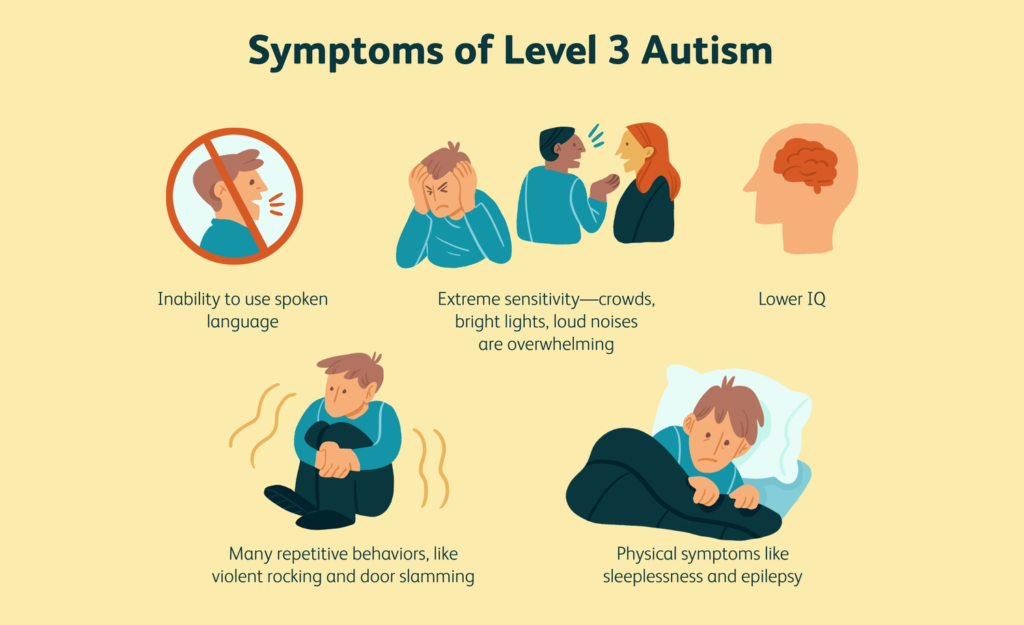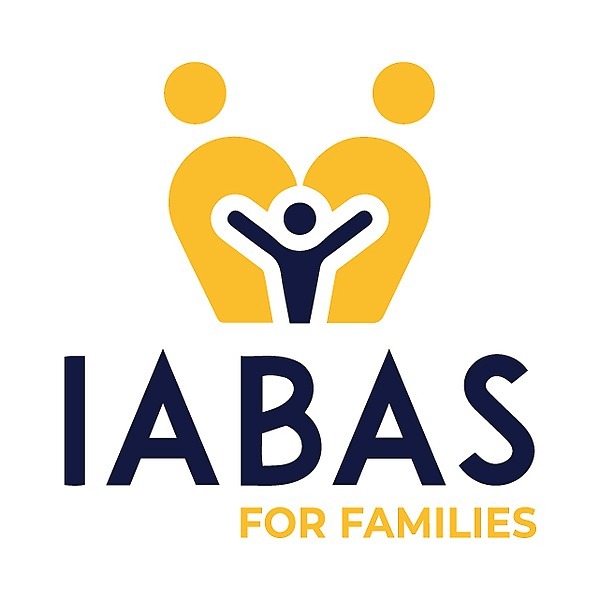At IABAS, we understand that autism can be a challenging diagnosis for families. That’s why we’re committed to providing resources and support to help families better understand and address autism in their loved ones. It all starts with recognizing the signs and symptoms of autism.
Key Takeaways:
- Recognizing the signs and symptoms of autism is crucial to helping children reach their full potential.
- IABAS is a valuable resource for families seeking to understand and address autism.
What is Autism?
Autism, or autism spectrum disorder (ASD), is a developmental disorder that affects how individuals communicate, behave, and interact with others. Autism is a spectrum disorder, meaning that it presents in a wide range of ways and affects individuals to varying degrees.
Diagnosing autism can be a complex process, and there is no single test that can definitively diagnose it. Rather, doctors and specialists use a combination of evaluations and assessments to determine whether an individual meets the criteria for an autism diagnosis.
| Symptoms of Autism Spectrum Disorder | |
|---|---|
| Social communication difficulties | Individuals with autism may struggle with verbal and nonverbal communication, including eye contact, gestures, and facial expressions. They may also have difficulty understanding social cues and may not engage in typical back-and-forth conversation. |
| Repetitive behaviors | Individuals with autism may engage in repetitive motions or behaviors, such as rocking or hand flapping. They may also have rigid routines or become upset when routines are disrupted. |
| Sensory sensitivities | Individuals with autism may have unusual reactions to sensory input, such as becoming overwhelmed by loud noises, feeling averse to certain textures, or seeking out tactile stimulation. |
It is important to note that not all individuals with autism will display all of these symptoms, and symptoms may present differently in different individuals. Additionally, individuals with autism may have strengths and abilities in certain areas, such as music, art, or science.
If you suspect that your child or a loved one may have autism, it is important to seek out a professional evaluation to receive a proper diagnosis and any necessary support and resources.
Early Signs of Autism
Parents and caregivers should be aware of certain early signs of autism that might indicate the presence of this disorder. While every child with autism is unique, there are specific behaviors that are often seen in children with this condition. These signs may manifest as early as infancy, and usually become more noticeable as the child develops and grows.
| Red Flags for Autism in Babies | Red Flags for Autism in Toddlers |
|---|---|
| No babbling or pointing by 12 months | No single words by 16 months |
| No response to name by 12 months | No two-word phrases by 24 months |
| No social smiling or other warm, joyful expressions by 6 months or thereafter | Loss of language or social skills at any age |
| No back-and-forth sharing of sounds, smiles, or other facial expressions by 9 months | Avoids eye contact and wants to be alone |
| No babbling by 9 months | Difficulty understanding other people’s feelings or talking about their own feelings |
It’s important to note that the absence of any of these behaviors in a child does not necessarily mean they have autism. However, if you are concerned about your child’s development, it’s always a good idea to consult with a pediatrician or an autism specialist.
Autism Behavior and Characteristics
Individuals with autism spectrum disorder experience a wide range of symptoms and behaviors, which can manifest themselves differently from person to person. However, there are some common characteristics that many individuals with autism share, including:
| Behavior/Characteristic | Description |
|---|---|
| Difficulty with social communication | Individuals with autism often struggle with verbal and nonverbal communication. They may not use or comprehend gestures, facial expressions, and tone of voice, and they may have difficulty maintaining conversation. |
| Repetitive behaviors | Many individuals with autism engage in repetitive behaviors, such as rocking back and forth, lining up objects, or repeating words or phrases. These behaviors can be calming and comforting for the individual. |
| Sensory sensitivities | Individuals with autism may experience heightened or reduced sensitivity to sensory input, such as sound, light, touch, and taste. They may be overwhelmed by loud noises or bright lights, or they may seek out certain sensations. |
| Narrow interests | Many individuals with autism have a deep interest in a particular topic or activity, and may spend hours focused on that interest. They may have difficulty engaging in other activities or topics. |
It is important to note that these behaviors and characteristics are not unique to individuals with autism and do not necessarily indicate a diagnosis. However, if these behaviors are significantly impacting an individual’s social, academic, or daily functioning, it may be worth seeking professional evaluation.
Autism Diagnosis and Evaluation
Diagnosing autism can be complex, and it’s important to seek professional evaluation. The diagnostic process typically involves a team of specialists, including a pediatrician, psychologist, and other healthcare professionals.
There are various assessments and evaluations used to determine an autism diagnosis. The most commonly used evaluation is the Autism Diagnostic Observation Schedule (ADOS). This evaluation involves a series of structured activities that allow the clinician to observe the child’s behavior and determine if they meet the criteria for autism spectrum disorder.
Other evaluations that may be used include the Childhood Autism Rating Scale (CARS), the Social Communication Questionnaire (SCQ), and the Autism Diagnostic Interview-Revised (ADI-R).
Autism in Children
Autism can affect individuals of all ages, but it often becomes apparent in early childhood. The signs and symptoms of autism can vary widely depending on the individual, their age, and their level of functioning.
For young children, some of the early signs of autism may include:
- Not responding to their name or to the sound of a familiar voice
- Not pointing at objects to indicate interest
- Not looking at objects or people when someone else is pointing at them
- Not making eye contact
- Not using gestures like waving or reaching for things
- Not understanding basic social cues and facial expressions
As children get older, they may continue to experience difficulties in social communication and interaction. They may have trouble making friends, understanding humor, and interpreting social cues.
Children with autism may also exhibit repetitive behaviors, such as:
- Repeating words or phrases over and over again
- Engaging in repetitive movements like flapping their hands or rocking back and forth
- Becoming obsessed with certain objects or topics
- Having very rigid routines and becoming upset if their routines are disrupted
It’s important for parents and caregivers to be aware of these behaviors and to seek support if they are concerned about a child’s development. Early intervention can make a significant difference in improving outcomes for children with autism.
At IABAS, we understand the challenges that families face when dealing with autism. Our team of experts is available to provide support, guidance, and resources to help families navigate the journey of raising a child with autism.
Understanding Autism Red Flags
As we have discussed, recognizing the signs and symptoms of autism is crucial for early intervention and support. Here is a comprehensive checklist of red flags and warning signs to look out for in individuals of all ages:
| Red Flags | Behavioral Characteristics |
|---|---|
| Lack of eye contact | Difficulty with social communication |
| No babbling or pointing by 12 months | Lack of interest in playing with others |
| No single words by 16 months | Repetitive behaviors or routines |
| No two-word phrases by 24 months | Sensory sensitivities |
| Loss of language or social skills at any age | Unusual interests or fixations |
| Difficulty with transitions or changes in routine | Delayed or atypical language development |
If you recognize any of these red flags in yourself or someone you know, we encourage you to seek professional evaluation and support. Early intervention can make a significant difference in an individual’s life and improve outcomes.
At IABAS, we are committed to providing families with the knowledge and resources they need to understand and address autism. Contact us today to learn more about our services and how we can support you on your journey.
Empowering Families with Knowledge and Support
As we’ve discussed, recognizing the signs and symptoms of autism is crucial for helping children reach their full potential. We understand that this can be a daunting task for families, but know that you are not alone.
At IABAS, we are committed to empowering families with knowledge and support to navigate the journey of autism. Our team of professionals is here to answer your questions, guide you through the diagnostic process, and provide comprehensive evaluations and interventions.
It is our belief that early intervention is key to positive outcomes for children with autism. By equipping families with the knowledge and tools to recognize and address autism, we can help ensure that children receive the support they need to thrive.
Thank you for taking the time to learn about autism and how IABAS can provide support for you and your family. We encourage you to continue your journey of understanding and to reach out to us with any questions or concerns you may have.
FAQ
Q: What is autism?
A: Autism is a neurological and developmental disorder that affects communication and social interaction. It is characterized by repetitive behaviors, restricted interests, and difficulties in social communication.
Q: What are the early signs of autism?
A: Early signs of autism may include a lack of eye contact, delayed speech development, repetitive movements, difficulty with changes in routine, and a lack of social interaction.
Q: How is autism diagnosed?
A: Autism is typically diagnosed through a comprehensive evaluation conducted by a team of professionals, including pediatricians, psychologists, and speech and language therapists. The evaluation may involve observing the child’s behavior, developmental history, and standardized assessments.
Q: What are the behavioral characteristics of autism?
A: Individuals with autism may exhibit social communication difficulties, repetitive behaviors, sensory sensitivities, and a strong adherence to routines. They may also struggle with understanding and expressing emotions.
Q: How does autism present itself in children?
A: The signs and symptoms of autism can vary in children, depending on their age and developmental stage. Common signs may include delayed speech, difficulty with social interactions, repetitive behaviors, and sensory sensitivities.
Q: What are some red flags for autism?
A: Red flags for autism can include a lack of eye contact, delayed language or speech development, repetitive behaviors, difficulties with social interactions, and intense fixations on certain objects or topics.
Q: How can I support my child with autism?
A: Supporting a child with autism involves creating a structured and supportive environment, providing opportunities for social interaction and communication, and accessing appropriate therapies and interventions. It is important to work closely with healthcare professionals and educators to develop an individualized plan for your child.
Q: Where can I find support and resources for autism?
A: IABAS is a valuable resource for families seeking support and guidance in understanding and addressing autism. They offer a range of resources, including educational materials, support groups, and access to professionals specializing in autism spectrum disorder.

